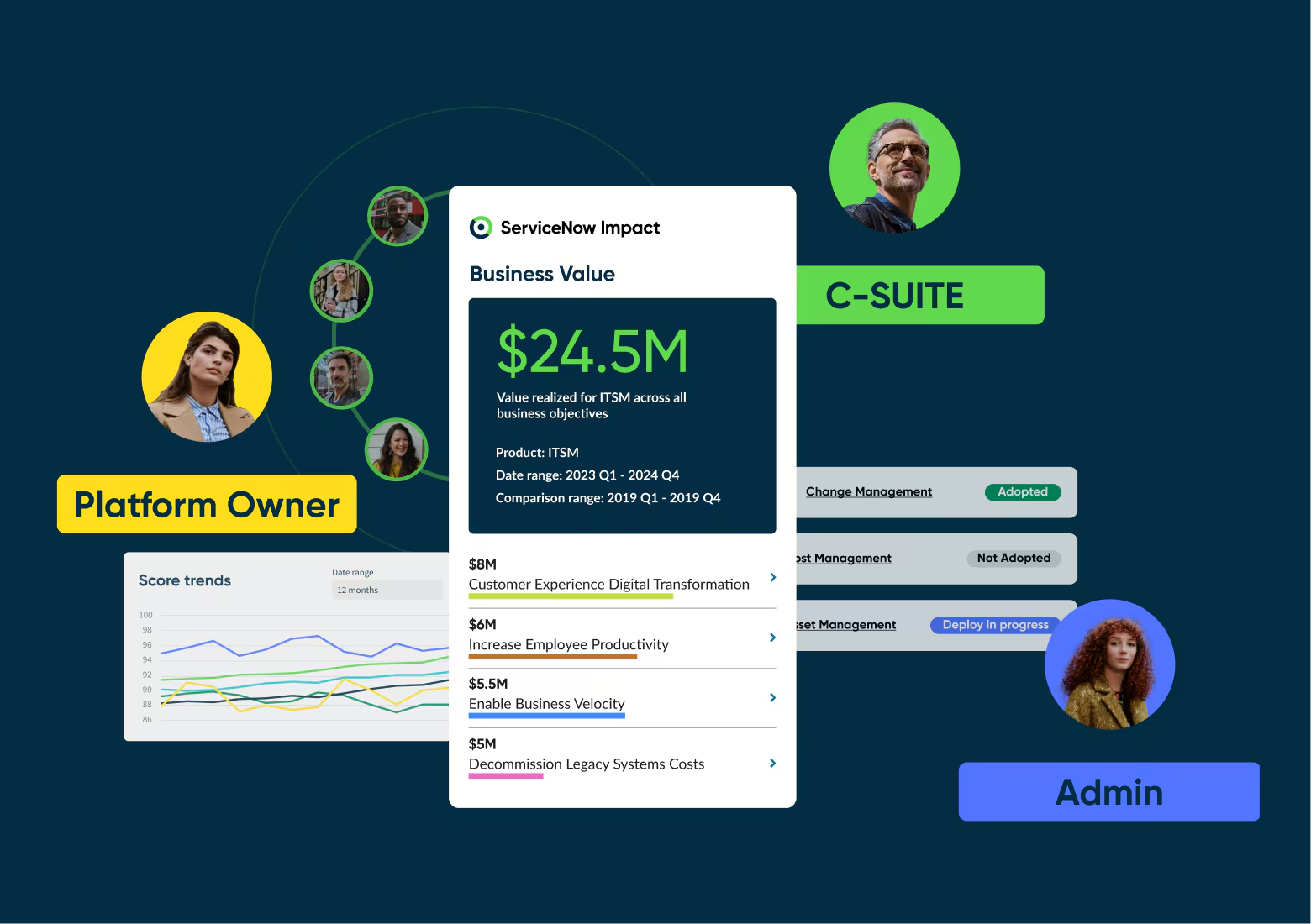Recruter les bons talents ServiceNow a une incidence directe sur le rendement du capital investi (RCI) de votre plateforme. Bien que les compétences techniques soient importantes, les mises en œuvre les plus réussies de ServiceNow dépendent de professionnel·les dont l’expertise en plateforme est associée à des capacités de transformation de l’entreprise. Voici comment repérer, attirer et maintenir en poste les talents qui vous permettront d’optimiser votre investissement dans ServiceNow.
Architectes techniques comme fondement stratégique
Ne vous contentez pas des certifications lorsque vous évaluez les architectes ServiceNow. Les meilleur·es candidat·es démontrent comment il·elles ont tiré parti de la plateforme pour résoudre des problèmes commerciaux complexes. Au cours des entrevues, il·elles doivent montrer qu’il·elles maîtrisent les éléments suivants :
- Architecture de la plateforme à l’échelle de l’entreprise
- Conception de l’intégration et évolutivité
- Élaboration d’une feuille de route stratégique
- Réalisation de la valeur commerciale

Excellence en développement
Les talents de développement doivent être évalués avec soin. Les meilleur·es développeur·ses ServiceNow maîtrisent à la fois l’élaboration de scripts côté client et les meilleures pratiques de développement de la plateforme. Ils comprennent l’équilibre délicat entre les solutions personnalisées et les capacités de la plateforme, ce qui permet de s’assurer que les mises en œuvre demeurent viables au fil des mises à niveau, tout en offrant des fonctionnalités précises qui génèrent de la valeur pour l’entreprise.
Architecture des processus
Les architectes de processus transforment les besoins de l’entreprise en solutions numériques complètes. Lors du recrutement, privilégiez les candidat·es qui démontrent leur capacité d’optimiser les processus entre les différents services de l’entreprise. Ces professionnel·les doivent donner des exemples clairs de la suppression des silos opérationnels et de l’accroissement de l’efficacité à l’échelle de l’entreprise en raison des mises en œuvre de ServiceNow.
Analyse d’affaires et création de valeur
Les analystes d’affaires doivent posséder une expertise en plateforme et une perspective stratégique. Les meilleur·es candidat·es prouvent leur capacité de repérer les opportunités d’automatisation que d’autres ne voient pas. Ils comprennent l’aspect humain de la transformation numérique, ce qui leur permet de transformer les parties prenantes réticentes en défenseur·ses de la plateforme grâce à une gestion efficace du changement et à une démonstration claire de la valeur ajoutée.

Gestion des connaissances
L’échange de connaissances doit être systématique et s’accompagner de programmes officiels de formation polyvalente et de développement des compétences. Les meilleures équipes ServiceNow consacrent du temps chaque semaine à l’exploration des nouvelles capacités de la plateforme et à l’échange de perspectives de mise en œuvre. Cet investissement en temps est récompensé par l’accélération de la fourniture de solutions et l’accroissement de l’innovation.
Indicateurs de rendement
Suivre les indicateurs qui comptent pour les parties prenantes de l’entreprise : alors que les indicateurs de rendement clés (IRC) techniques fournissent des perspectives opérationnelles, les équipes exceptionnelles se concentrent sur les résultats de l’entreprise. Ils mesurent la réussite en fonction de la réduction des temps de traitement, de l’amélioration des niveaux de service et de l’augmentation des taux d’automatisation. Ces indicateurs démontrent la valeur de l’équipe et justifient un investissement supplémentaire dans le développement des talents.
Protection de votre investissement dans ServiceNow pour l’avenir
Commencez par évaluer les candidat·es en fonction des facteurs de réussite essentiels suivants :
- Expérience avérée de la transformation des activités
- Compréhension claire de la gestion des services d’entreprise
- Expérience de l’engagement des parties prenantes
- Preuve d’apprentissage et d’adaptation continus
- Capacité de concilier l’excellence technique et les besoins de l’entreprise
Créez des parcours d’apprentissage structurés pour les différents rôles et niveaux d’expertise. Travaillez en partenariat avec des recruteur·ses spécialisé·es en ServiceNow qui comprennent à la fois les exigences techniques et l’incidence sur l’entreprise. Établissez des relations avec les universités et les programmes de formation pour développer les talents débutants.
La différence entre les mises en œuvre moyennes et exceptionnelles de ServiceNow se résume souvent à la stratégie en matière de talents. En vous concentrant sur des professionnel·les qui allient expertise technique et sens des affaires, vous créez des équipes capables d’apporter une valeur transformatrice par le biais de la plateforme. Commencez dès aujourd’hui à mettre en œuvre ces stratégies de recrutement et de développement pour assurer votre réussite ServiceNow.

Une réussite à long terme
La conception de l’organisation a une incidence directe sur l’efficacité de ServiceNow. Structurez votre équipe de manière à permettre la collaboration entre les expert·es techniques et les professionnel·les d’entreprise. Créez des parcours de carrière clairs qui récompensent à la fois l’excellence technique et l’incidence sur l’entreprise. Cette approche aide à maintenir en poste les meilleurs talents tout en s’assurant que votre équipe peut évoluer avec l’adoption de la plateforme.
La réussite de la mise en œuvre de ServiceNow exige plus qu’une simple expertise technique, elle requiert des professionnel·les capables de piloter la transformation de l’entreprise par le biais de la technologie. Constituez votre équipe en tenant compte de ce double objectif et vous créerez un avantage concurrentiel durable grâce à votre plateforme ServiceNow.
Pour de plus amples renseignements sur la constitution d’une équipe ServiceNow gagnante, pensez à contacter l’équipe chargée des talents spécialisés de Procom. Avec plus de 45 années d’expérience en recrutement informatique, Procom est votre partenaire de confiance pour obtenir l’expertise ServiceNow dont votre organisation a besoin pour exceller.
















